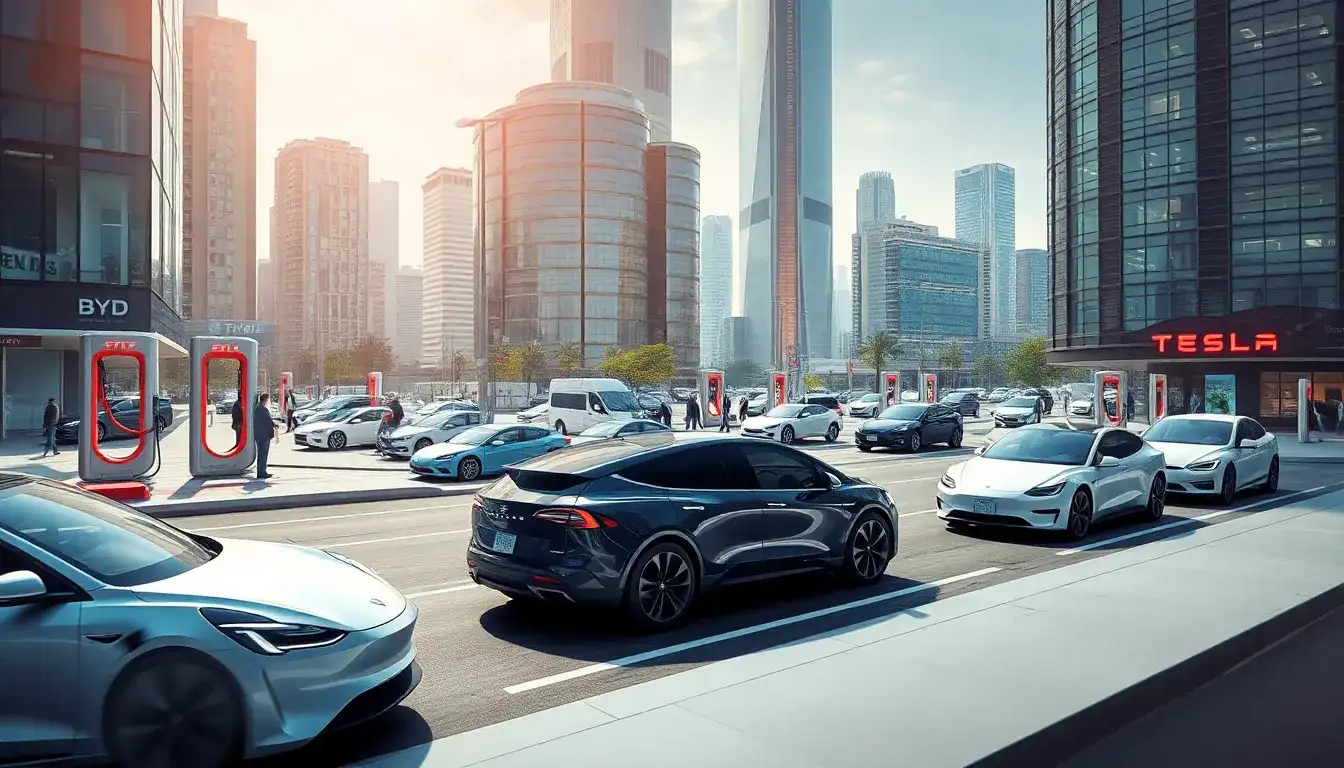
BYD, a Chinese automotive manufacturer, has reported an annual revenue of over $107 billion for 2024, surpassing its rival Tesla. The Shenzhen-based company announced that its revenue for the year is expected to reach approximately $107 billion, exceeding market expectations and surpassing Tesla’s anticipated revenue of $97.7 billion for the same period.
According to BYD’s financial report released on Monday, its net profit increased by 34% year-on-year, amounting to $5.56 billion, which is significantly higher than analysts had predicted. BYD has long been a dominant force in the Chinese automotive industry and has rapidly consolidated its position as a global leader in the electric vehicle sector.
China holds the title of the world’s largest electric vehicle market, with intense competition continuing to drive advancements. BYD has effectively leveraged its home advantage, achieving remarkable growth in both pure electric and hybrid models. Innovation has played a crucial role in BYD’s outstanding performance last year. In 2024, the company launched a next-generation charging system that can provide 250 miles of range in just five minutes, marking a significant breakthrough in electric vehicle infrastructure.
Additionally, BYD has introduced upgraded driving assistance features across its entire range of models, further enhancing consumer appeal. These technological advancements have translated into strong investor confidence. Shares of BYD, listed in Hong Kong, have surged approximately 51% over the past year, reaching an all-time high, reflecting robust market optimism.
In contrast, Tesla’s stock has faced significant declines, falling nearly 50% from its peak of around $490 post-December elections last year. Investor concerns over declining sales and worries that CEO Elon Musk’s relationship with the Trump administration may have distracted him from effectively leading the automaker have contributed to a market capitalization loss of nearly $750 billion.
Despite the stock price drop, Musk reassured employees during an internal meeting on Monday about the company’s progress in autonomous driving and robotics technologies, suggesting these advancements would drive long-term growth. Following this meeting, Tesla’s stock rebounded sharply, rising 11.9% to close at $278.39, marking the largest single-day gain since a 14.8% increase in early November.
Wider market optimism also played a role, as investors became increasingly confident that the Trump administration might ease stringent tariffs on imports from Mexico and Canada—an issue particularly critical for automakers reliant on cross-border supply chains.
While Tesla maintains a slight lead in global electric vehicle sales with 1.79 million units sold in 2024, BYD closely follows with 1.76 million units in pure electric vehicle sales. However, when including hybrid vehicles, BYD’s total deliveries soared to 4.27 million, nearly matching Ford’s total vehicle sales.
Looking ahead, BYD anticipates even more rapid growth, expecting its vehicle sales to reach between 5 million and 6 million units by 2025. This momentum appears to be continuing into the new year, as BYD reported a 93% year-on-year increase in sales for January and February, totaling over 623,000 vehicles.
BYD’s rise marks a significant turning point in the global electric vehicle race. Although Tesla remains a strong contender, particularly in the U.S. market, BYD’s combination of affordability, innovation, and production scale has proven to be a successful formula—especially in emerging and domestic markets.
As of early 2025, Tesla’s vehicle lineup in the U.S. spans a wide price range. The most affordable model, the Model 3, starts at around $42,490, while higher-end models can cost up to $54,990. The Model Y rear-wheel drive version starts at approximately $46,630, with the long-range all-wheel-drive version priced at $61,630. The Model S begins at $79,990, and the high-performance Plaid version is priced at $94,990. The high-end electric SUV, Model X, starts at $79,380, with the Plaid version reaching $99,990. The newly released Cybertruck ranges from $60,990 for the base single-motor model to $99,990 for the three-motor “Cyberbeast.”
In contrast, BYD offers a more affordable lineup of electric vehicles primarily targeting domestic and emerging markets. The Seagull, a compact city electric car, starts at approximately $11,400, while the Dolphin hatchback begins around $13,900. The Han EV, BYD’s flagship electric sedan, is positioned in the mid-range market, with prices ranging from $32,800 to $40,000, depending on interior and feature variations. The Xia MPV, a family-oriented multipurpose vehicle, starts at around $34,000.
Currently, BYD’s passenger vehicles are not available in the U.S., whereas Tesla has successfully entered both the U.S. and Chinese markets. The lower prices of electric vehicles in China are largely due to substantial government support, including subsidies, tax reductions, and investments in charging infrastructure. Additionally, BYD and other Chinese companies benefit from lower labor and production costs, along with localized supply chains for batteries and components. Tesla has not commented on this matter.







